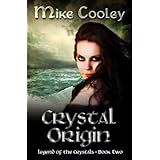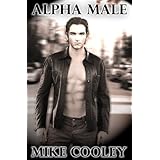MJN: There are so many fantasy novels featuring crystals.
I've often asked myself about the roots of our fascination with crystals as
vessels of mystical powers. There must be some Jungian explanation behind it.
It's in our psyche to tremble before a hard, glowing cluster of minerals.
MC: I agree. There is
something about light reflecting through crystal that touches us in an ancient
way, like the flickering flames of a fire protecting the entrance to our cave.
I’ve always been fascinated with
artifact stories, where the artifact is mysterious and has powers. In Crystal
Warrior I wanted the source of magic to manifest itself in many different ways.
Originally there were supposed to be eight crystals, but I realized that would
make things a bit too complicated, so I settled on six. Each crystal has a
color, a power, and a god or goddess that it represents. And although the
temples to the gods have crumbled over the centuries, the legends remain. Here
are the crystals, their alternate names, their colors, their powers, and the
gods they represent:
·
Crystal of Foreboding (Spirit of Kiefer) — White, future sight, Kiefer
(God)
·
Crystal of Accuracy (Eye of Gort) — Red, accurate aim, Gort (God)
·
Crystal of Healing (Hand of Malkt) — Green, self-healing and healing
others, Malkt (Goddess)
·
Crystal of Time (Skull of Platkar) — Gold, temporary time stop, Platkar
(God)
·
Crystal of Illusion (Skin of Serna) — Silver, invisibility & changing
appearance, Serna (Goddess)
·
Crystal of Love (Heart of Palnk) — Purple, makes others love and obey you,
Palnk (Goddess)
MJN: When you come up with fictitious names of places and
species of birds and animals, is there any particular ethos you draw your
inspiration from? For instance, do you seek to make them sound Native American,
or Celtic, or Arabic, or Greek?
MC: That’s a tough
question! In the Legend of the Crystals series I tried to make the names fit
the characters, while not making them sound too Earth-like. Since the story
takes place far across space on a planet that has never heard of Earth I didn’t
think the characters should have common names. Larissya, of course, is a fairly
normal name, but many of the others are not. In particular there is a magical
creature named Taradahn. I named him that because he is similar to a
pterodactyl in some ways and I liked the way the name sounded. Often with names
I go with hunches and how they sound. I also try to avoid using names that are
hard to pronounce, as I think that gets annoying for the reader. The Widgen—who
are kind of like tree elves—have more whimsical names, like Jinga, as I thought
that fit in better with their personalities.
MJN: In your biography
you say that you enjoy to explore the dark and surreal landscapes of the mind.
Can you name a few of your favorite filmmakers? I imagine you would be a fan of
Lynch and Cronenberg.
MC: I love this question!
I am heavily influenced by dark fantasy and science fiction. When it comes to
filmmakers, you are correct, Lynch and Cronenberg are near the top of my list
along with Kubrick, Ridley Scott, John Carpenter, Paul Verhoeven, and Joss
Whedon--to name a few. Some of my favorite films are: Bladerunner, Alien,
Serenity, and The Matrix.
MJN: Your Crystal series feature the same model on the cover.
Would you say your readership for that particular series is predominantly
female?
MC: I wish I knew! From
the reviews and emails I get I think it’s about 60/40, with females in the
lead. Those covers were done for me by a friend, and she sent me a few choices
to choose from for the model. Then, once I chose the model, there were a
limited number of shots to choose from for books two and three. I wanted it to
look like she was growing up a bit from book to book since the timeline from
book one to book three is a number of years. All I knew before the cover was
created was that I wanted her to look like a teenager with long dark hair and
green eyes. I sent the first four chapters to my friend and asked her to use
her best judgment about what model would work.
MJN: If you could
introduce an element of magic into our reality, any element, what would it be?
Can you think of a particular supernatural talent? Would it be granted to
everyone to the same degree, or would it have to be earned by the select few? How
would it potentially upset the balance of things?
MC: I’m a firm believer
that magic needs to be limited, and that using it shouldn’t be “free”. If there
isn’t a price to pay then I think it’s less dramatic and feels more like a
cheat to get the author or characters out of a jam. When it comes to magic in
our reality, I would introduce a healing ability like Melanie has in my
novella, Alpha Male. And it would be rare, which would make it very sought
after. I’m torn between whether it should be earned or inherent, but I lean
toward inherent but hidden until triggered by something. A magically augmented
empathy like that, where a person is willing to take another’s pain in an
effort to save them appeals to me. And I think it appeals to others, on a deep
level, since almost everyone at one point or another has probably wished they
had that power.




No comments:
Post a Comment